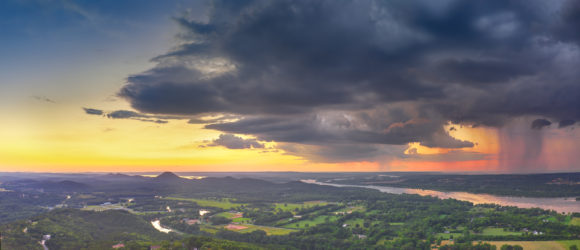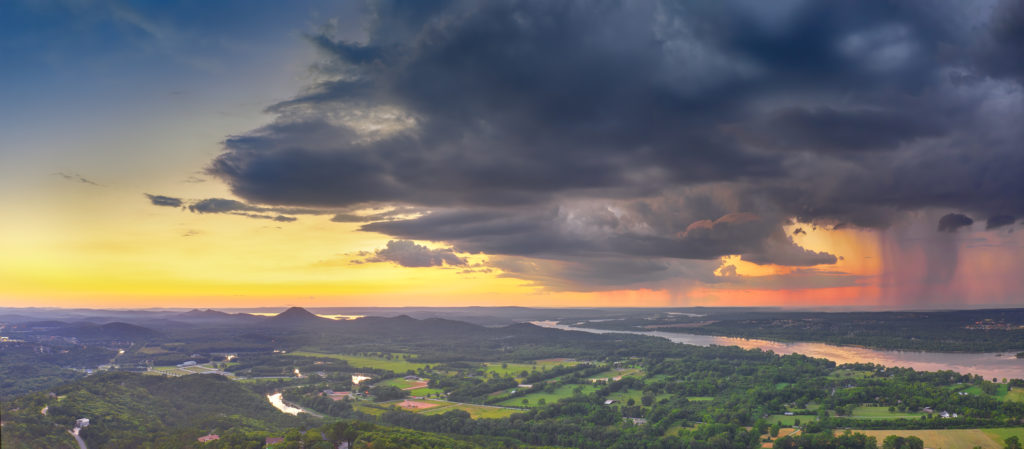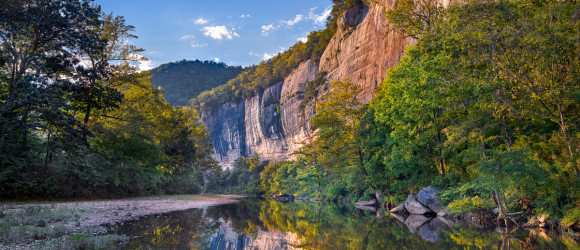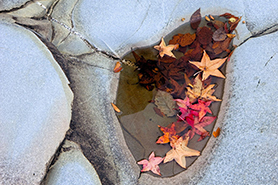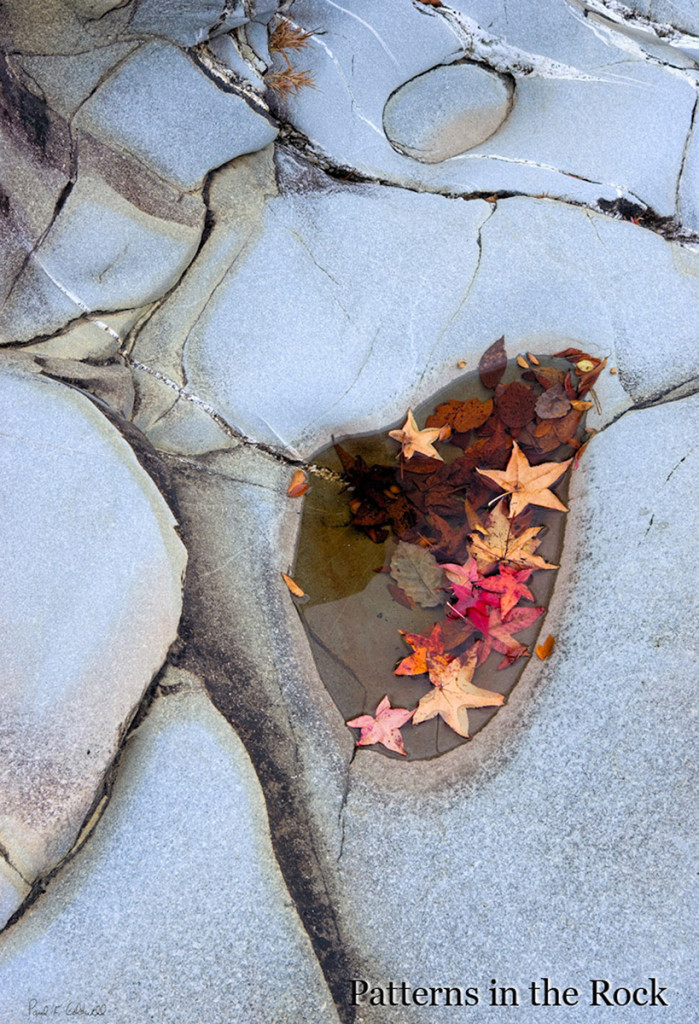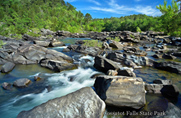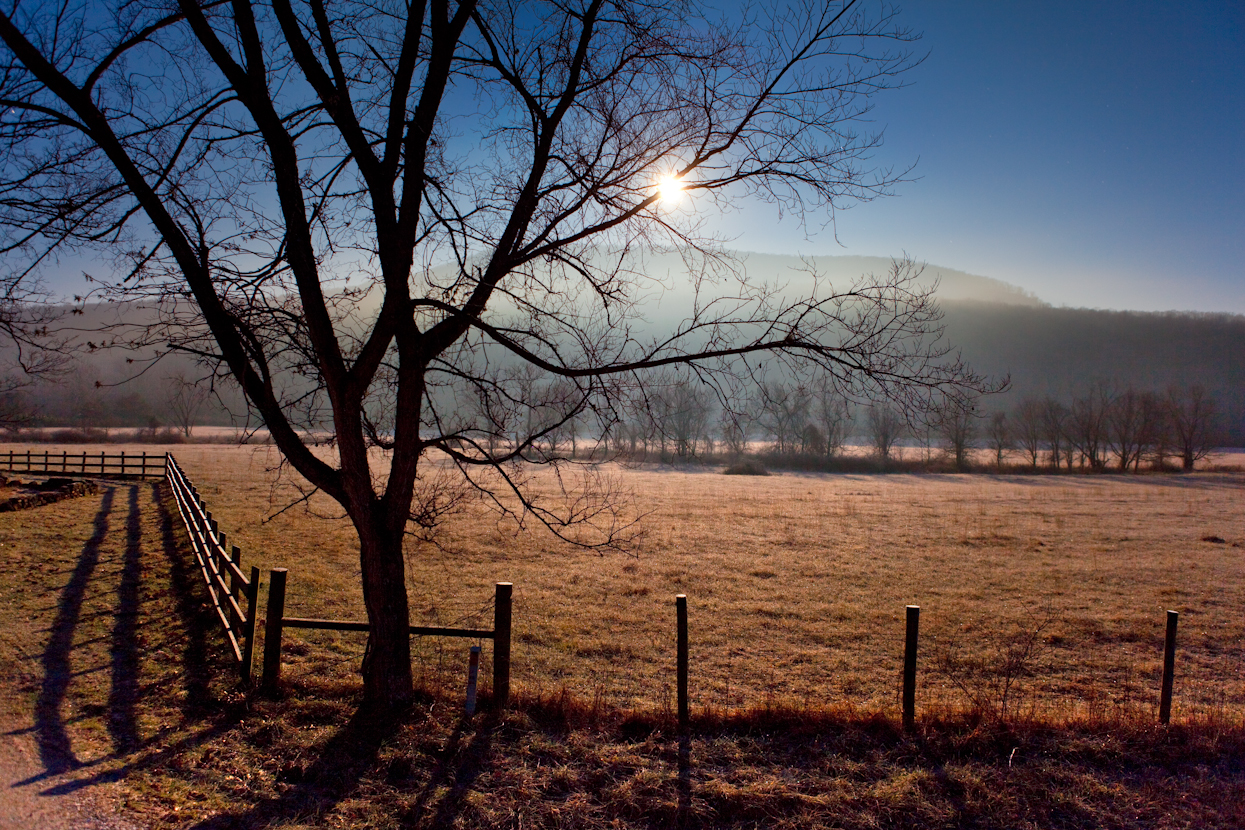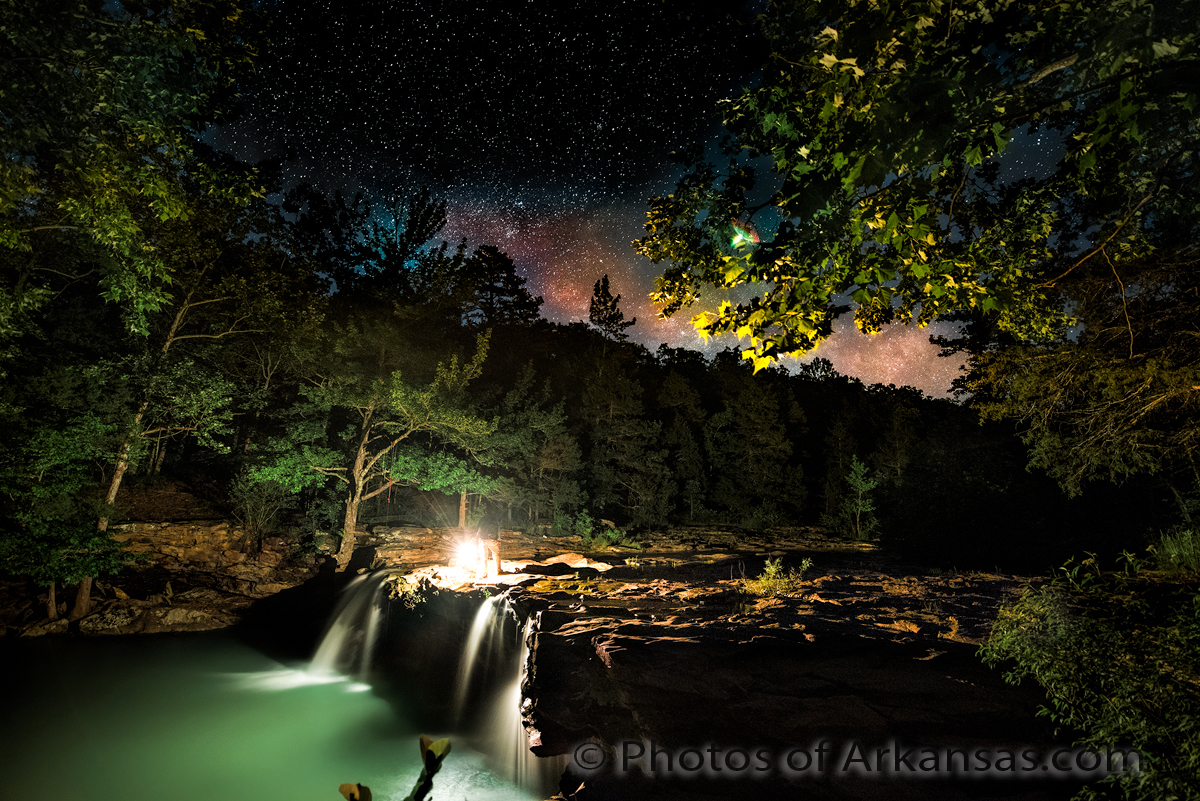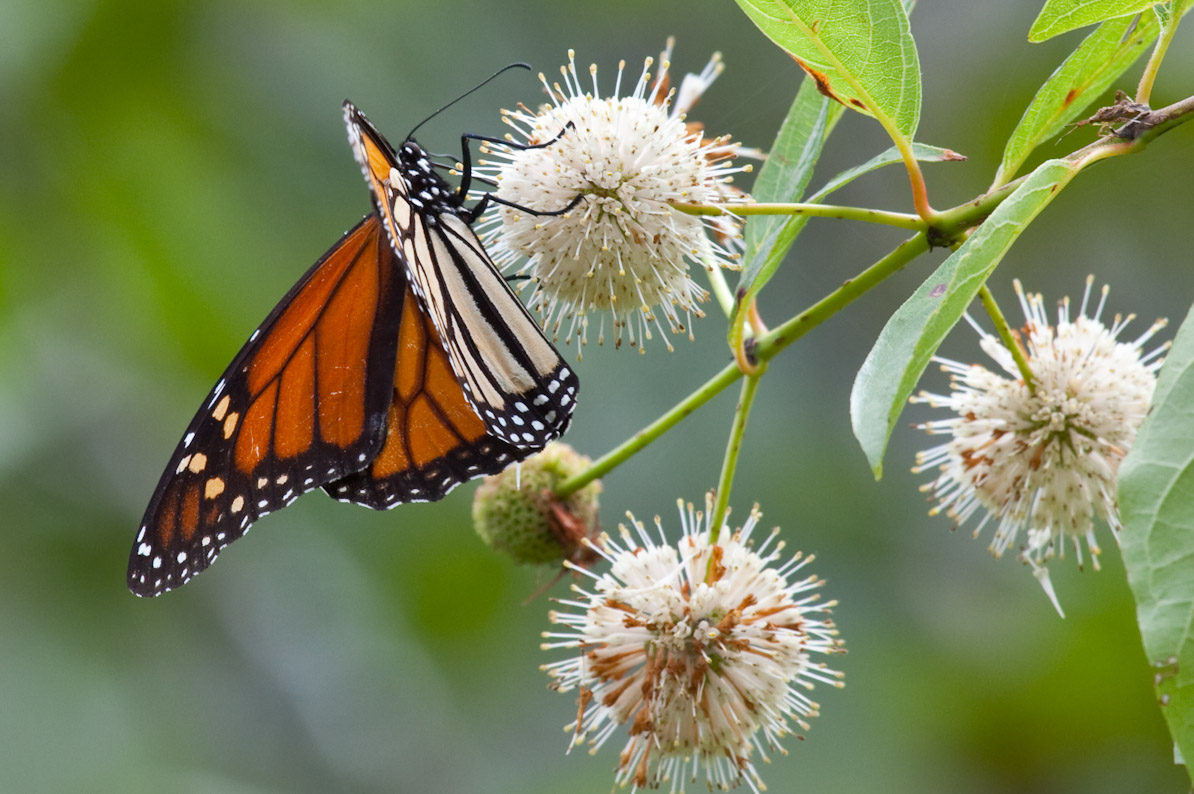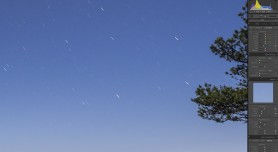06/13/20 A sunset with a stormy sky over Pinnacle Mountain
- At June 14, 2020
- By paul
- In Featured Arkansas Photography
 0
0
Taken with a DJI Mavic 2 Pro. For this shot I was forced to use multiple AEB bursts of 5 shots each, knowing that I would be throwing most of them out. However it’s the only way to get a a full reach of dynamic range from this drone as DJI really did a poor job on the raw capture process. But that’s another story in itself.
This was one of those wonderful thunderstorms that just rolled in quickly after the sun had dropped below the horizon. I started taking the shots right at around 8:00 pm and was able to shoot well towards 8:2o. This shot was one a rare shot as I was able to catch the full thunderstorm to the right of the shot and then the clear evening sky to the left. I used Capture One software to convert the raw files. I took 10 shots for the bottom portion to finally get a single file that was not too noisy. The sky was much easier to capture with just the normal 5 exposures. Once I had the images completed in Capture One, I opened them as tifs in Photoshop and layered the sky over the bottom of the image, doing this for the right and left half of the shot. Then I used Photoshop’s panoramic software to combine the final two images. Photoshop will do OK most of the time as long as you don’t have a pure blue sky or any other type of solid sky. The longest exposure was 1.6 seconds, which I feel is about the longest you can go with a drone in most conditions.
Paul Caldwell
09/27/16 Featured Arkansas Landscape Photography–Late afternoon at Roark Bluff Buffalo River
Taken with an Phase One IQ100 @ 35mm LS lens, ISO 50 and circular polarizer for both sky and cutting glare on leaves.
This is the time I like to start working the Buffalo River, as fall is just around the corner, and as can be seen in this shot, is actually started on the Buffalo.
The Buffalo River at Roark Bluff is one of my favorite spots to photograph and I work it as often as I can, but the drive up and back has started to slow me down. I was hoping for a few clouds to help break up the sky and there were there, but only towards the far side. The sun was playing hide and seek most of the afternoon, and when the sun finally came out the wind started to blow ruining the reflection. There are a lot of spots on the Buffalo to catch a reflection but this is my favorite.
This was taken in one exposure, something I never could have done before with a Phase One CCD back, the 100MP CMOS chip does have some excellent range. This type of shot is one of the most difficult as you are working directly at the brightest part of the subject. This means that anything not illuminated by the sun (in this case the left side of the river) will be in deep shade. You want enough exposure to be able to pull this area up some and not leave it black, but you also have to be very care not to blow out the sky, especially the left side. The use of a polarizer was needed more for the glare on the leaves to the right. Without it the colors would not have been as nice and clean, you have to be careful when working such a scene to see that you keep the polarized effect as even as possible on your sky, so you may need to try a few exposures.
After waiting for almost an hour, the sun popped back from behind the clouds and the wind died down long enough for this shot.
12/24/15 Featured Arkansas Landscape Photography–Patterns in the Rock on the Cossatot
Taken with a Canon 1ds MKII, and 100mm Macro lens, ISO 200.
The Cossatot River has some of the most unique rock formations in Arkansas. They are sandstone mixed with Quartz veins. The rocks tend to work their way across the river in rows and ledges and the river creates small channels through the rocks. The most famous of these would be Cossatot Falls, where there are 6 separate ledges going across the river.
I love to work the Cossatot, both in normal wide landscape shots but also like to spend time looking for macro shots. There are hundreds of spots like the one in this photograph, where the river has cut down the main ledge, and smoothed it over like sandpaper was used. Many of these will contain small depressions, that will catch rainwater.
This photograph was taken late in the fall season after a rain. The leaves were captured in the rock and the puddle just added to the scene for me. The smallish quartz veins that were running through the rock added some nice contrast. The rock in the Cossatot can appear pink when the sun is hitting it directly but there are some nice grey ones also to make for a colorful composition. In this photograph, you can see a bit of the pink showing up in the lower left corner.
The Cossatot is a long 3 hour drive from Little Rock but the area is remote so you can often find yourself working the falls all by yourself. If you are heading down that way, also consider the Little Missouri River, near Langley Arkansas. The Cossatot is in the southwest corner of Arkansas in the Ouachita mountains.
05/08/13 Featured Arkansas Photography–Cossatot Falls State Park near Mena Arkansas
- At May 08, 2013
- By paul
- In Featured Arkansas Photography
 0
0
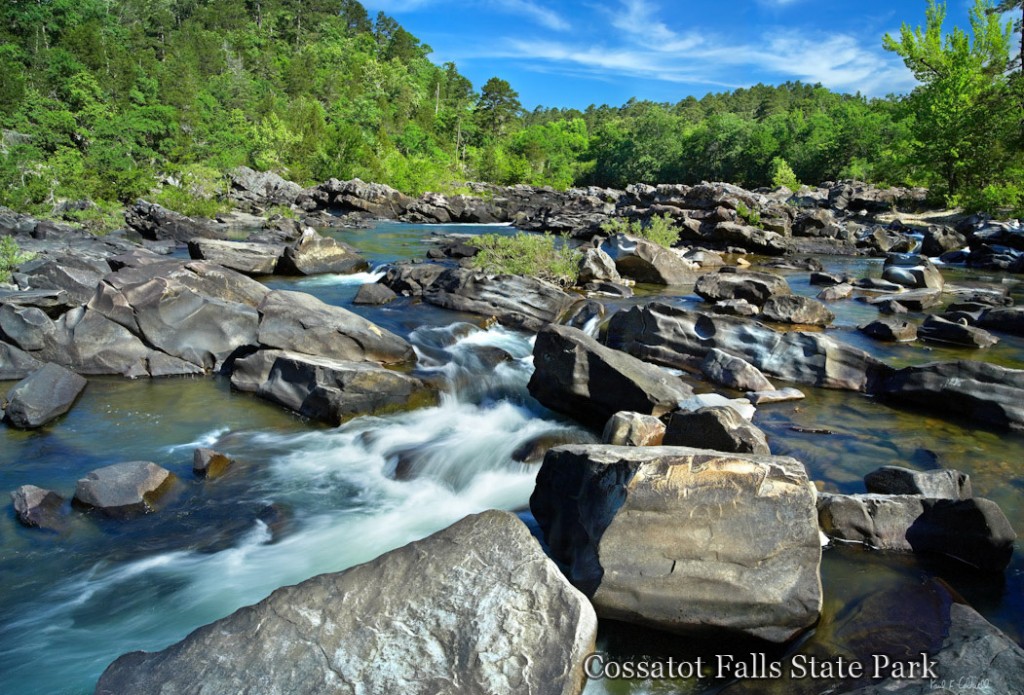
Cossatot Falls viewed from BMF rapid on the Cossatot River in Southwestern Arkansas–click on image for a larger view
Taken with a Canon 1ds-MKII, Zork adapter, 35mm Pentax FA lens, F11, iso 100 for approximately 1 second. The Cossatot River is one of the great scenic spots in the southwestern corner of Arkansas. The Cossatot runs due south and eventually creates Lake Greason. From there is continues to run into Millwood lake, one of the largest impoundments in the southwestern part of the state. This photograph was taken much further upstream in the area known as the six falls. Cossatot Falls is unique to Arkansas rivers as here you will find 6 distinctly different rapids that have cut through the sandstone ridges in different places. Each spot has a unique name, BMF, and the Washing Machine are two of the most famous. This photography is looking back upstream from BMF and features 3 of the falls. I took this shot with a Canon digital camera, with a Zork adapter that allows you to to 3 separate portrait frames as stitches. I then will combine the 3 frames into 1 landscape image. You gain a tremendous amount of resolution by shooting in this format.

